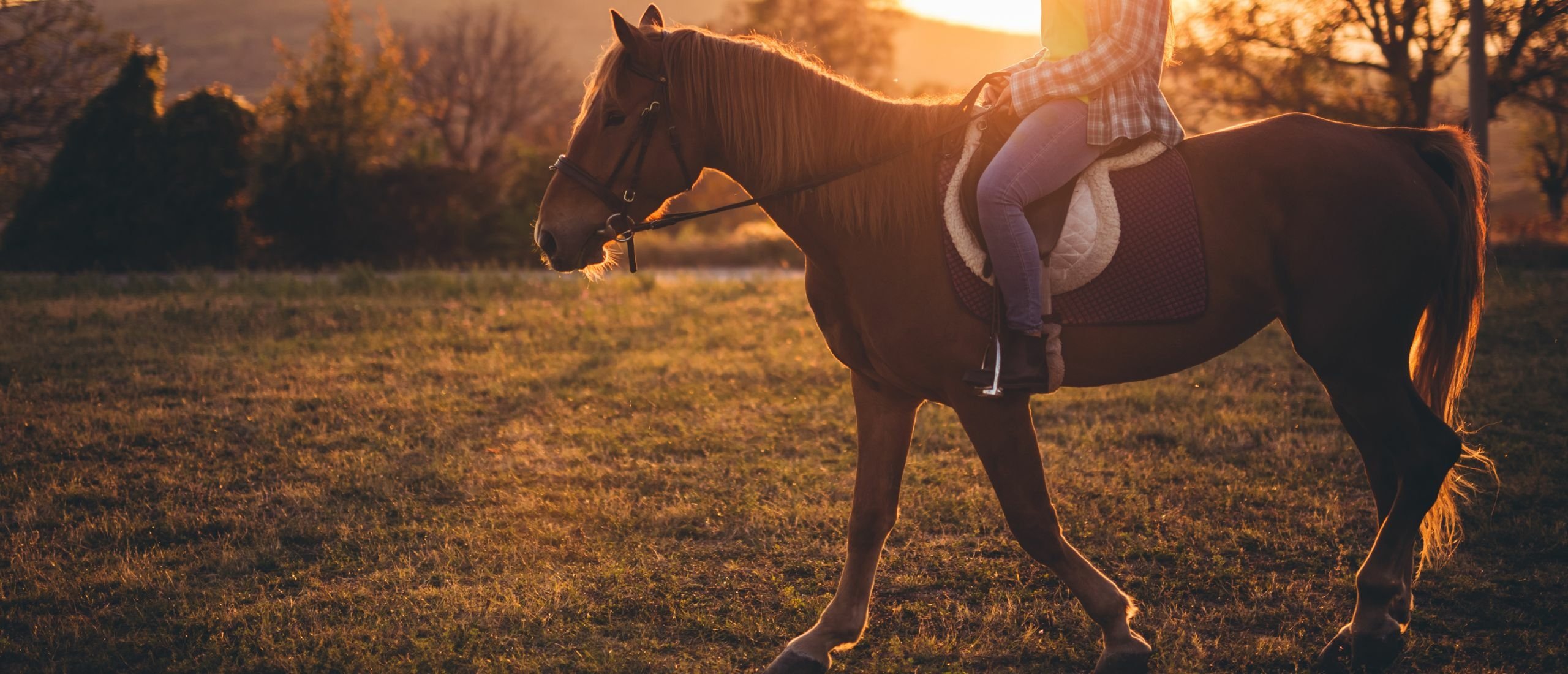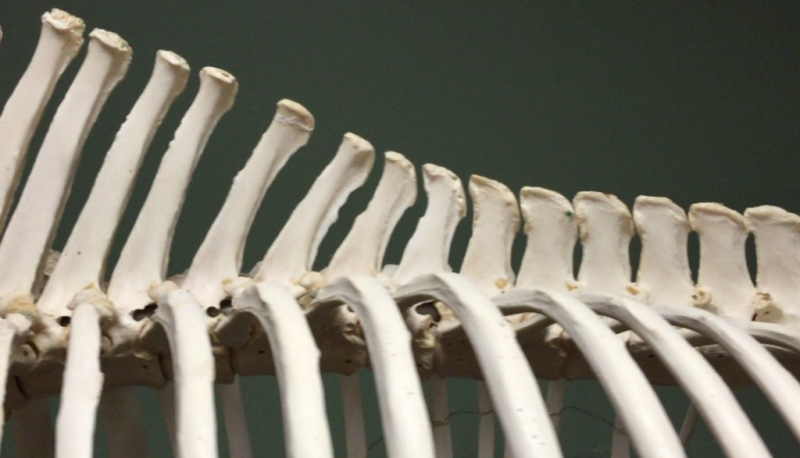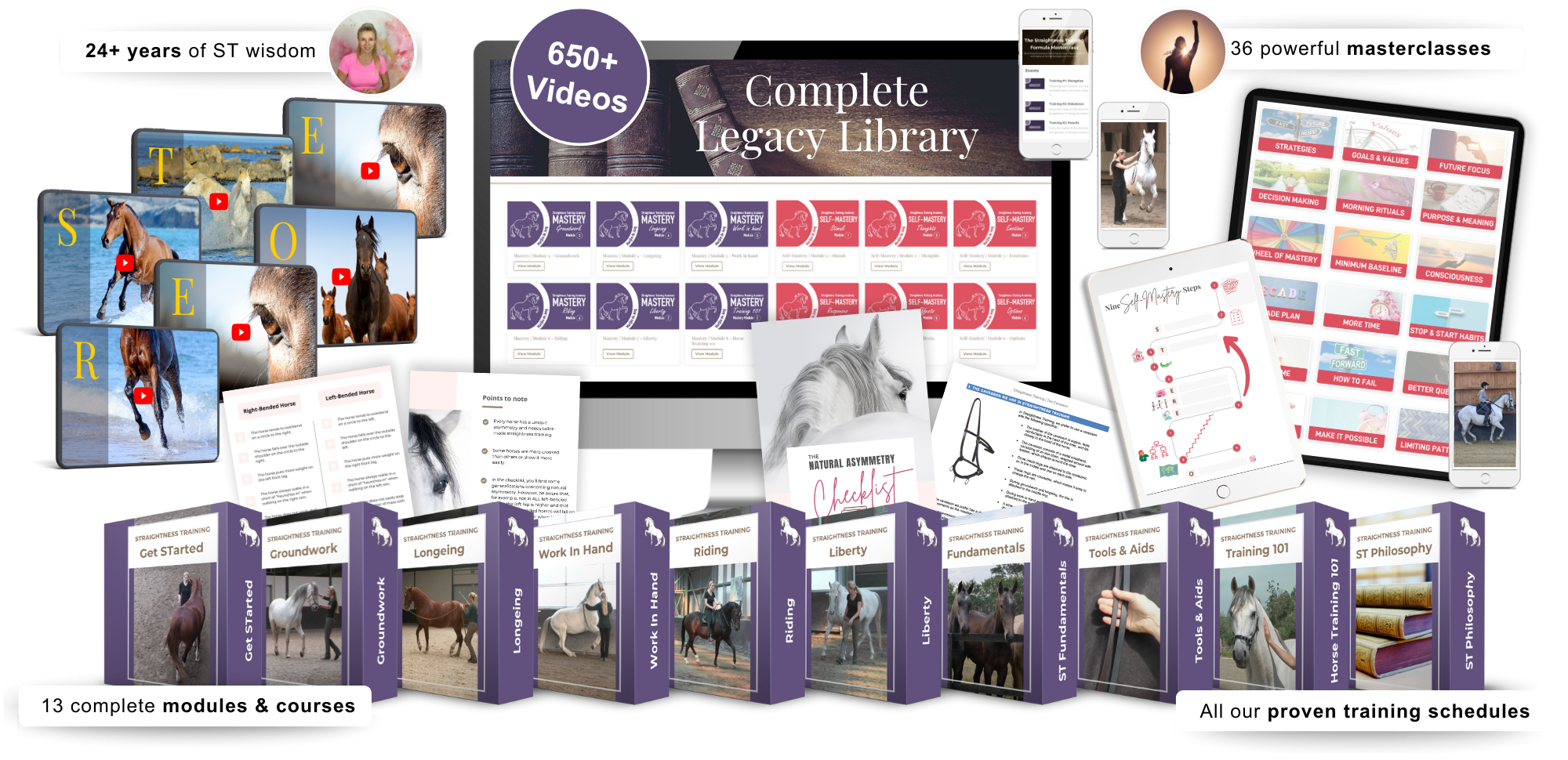
Topline Imbalance
When do you experience topline imbalance?
If your horse has the following symptoms:
- Hollow back
- Underneck
- Hard in the mouth
- Difficult to ride on the bit
- Taking the bit on one side
- Uncomfortable to sit to in trot
These are all symptoms of natural asymmetry.
It's tempting to fight these symptoms with special bits, draw reins, or gadgets...
But that only makes things worse as you can see in this video:
Topline imbalance: hollow back & high head
If we don’t address the 8 dimensions of natural asymmetry, this usually results in a bad posture and an incorrect use of abdominal muscles and back muscles.
In other words, it causes an imbalance in the muscles in the topline and underline of the horse.

When we don't address our horse's natural asymmetry, the horse starts to use its head and neck to balance itself. The horse starts to lift the head up.
This can only be done when the horse shortens the long back muscle (the ‘longissimus dorsi’). This muscle is located on both sides of the spine, and when tensed it becomes short, stiff and hard.
Underneck development
Not only the back muscles shorten and get stiff and hard, also the horse's underneck becomes pronounced.

When we don't address our horse's natural asymmetry, the underneck muscles start to stiffen.
Topline imbalance & Trot issues
When a horse is hard in the back, you can often only do the ‘rising’ trot because he makes you jump up and down in the saddle when you try to keep ‘sitting’.
It can also happen that your horse is very easy to sit in trot...
Almost too easy, that you can’t feel him moving...
In that case, they speak in Germany of a ‘Schenkel Gänger’, which means the horse is only moving the legs, but not the back.
These horses are comfortable to sit in trot, but they don’t use the back properly either.
Other symptoms and problems
A hard, stiff back and short topline can cause a whole range of problems:
- Head shaking
- Grinding the teeth
- Not wanting to stretch forward-down with the neck
- Lateral gaits
- Prancing
- Slow, not forward
- Short steps
- No tact
- Bridle lame
- Irregular gaits
- Striking, bucking, rearing
- Mental tension and nervousness
- Bad coat; because the blood flow through the tensed back muscles is reduced
- Kissing spines; because of the short topline the spines can start to ‘kiss’ each other.

Don’t fight the symptoms
The first step riders often make to fix the problem is choosing a sharper bit.
Sometimes draw reins are used with horses with a stiff back and stiff mouth, to make the horse lower its head and become soft and round.
But special bits, reins and gadgets often make things worse.

All tools that are used to tie the horse in a certain position and force its head in a certain way are, without exception, more harmful than helpful.
Don’t make things worse with gadgets
Fighting the symptoms usually creates new problems such as resisting the rider, protest, positioning the head behind the vertical, leaning on the riders’ hand as a fifth leg, bridle lameness and even lameness.

Also, the saliva glands are squeezed between the lower jaw and the tensed under neck muscles. This can lead to infections and can inhibit the production of saliva.

Plus, these additional reins ruin the horse’s mouth, because the communication through the bit can only be done with the soft, feeling, living hand of a rider.
So don't fight the symptoms. Instead:
Recognize the root cause
- Just realize that the horse's mouth is the symptom.
- And the short muscles in the back are the problem.
- And the reason your horse is hard in the back, is because your horse's unaddressed natural asymmetry.
In other words, a hard mouth = a hard back.
Remember:
- Your horse does not WANT to pull on the reins.
- Your horse does not WANT to take the bit on one side.
- Your horse does not WANT to behave badly.
- Your horse does not WANT to be a problem.
Stiff horses improve dramatically when we take their natural asymmetry into account.
The mouth is the barometor
The horse's head is the 'barometer' of your horse.
And your horse's body as the ‘weather’.
- A horse that is stiff in the mouth is stiff in the muscles.
- A horse that feels uneven in the mouth is uneven in the body.
- A horse that is hard in the mouth has hard back muscles.
This means, your can sense our horse’s natural asymmetry through your reins which have contact with the head of the horse.
Now, if we'd like the weather to change, it doesn't help to change the barometer️, right?
The barometer can only show you the condition of the weather.
The the weather needs to change to have another outcome on the barometer.
It’s the same with our horse:
Fighting and fixing the head is not the solution.
If the horse can't bend easily to both sides and doesn’t step under with the hind legs, then your horse cannot move in a forward down tendency with the head and neck.
That means, you horse will not yield and search in front.
Instead, he will feel stiff or hard in the mouth.

But more force, more reins, or special bits won't change your horse.
You have to change the body.
The solution
First, it's important to see your riding issues as symptoms and to decide not to fight those symptoms.
Then, it's crucial to recognize and address the root cause: natural asymmetry.
Start to train your horse in such a way that the muscles in the topline can relax and stretch, and the abdominal muscles can engage properly.
This will naturally lift the back so your horse can carry you in a healthy way.

Only with a training method that addresses the stiff muscles, your horse can actually start to relax the back muscles, drop the head and neck, and move towards the hand.
Your next STep
Don't fight the symptoms, address the root cause: your horse's natural asymmetry. It's the hidden force behind your mouth issues and topline imbalance.
Straightness Training helps you end your struggles once and for all, and create relaxation, suppleness, a correct posture, balance and harmony with your horse.
Join the FREE Straightness Training Masterclass and learn exactly how to create real change:

